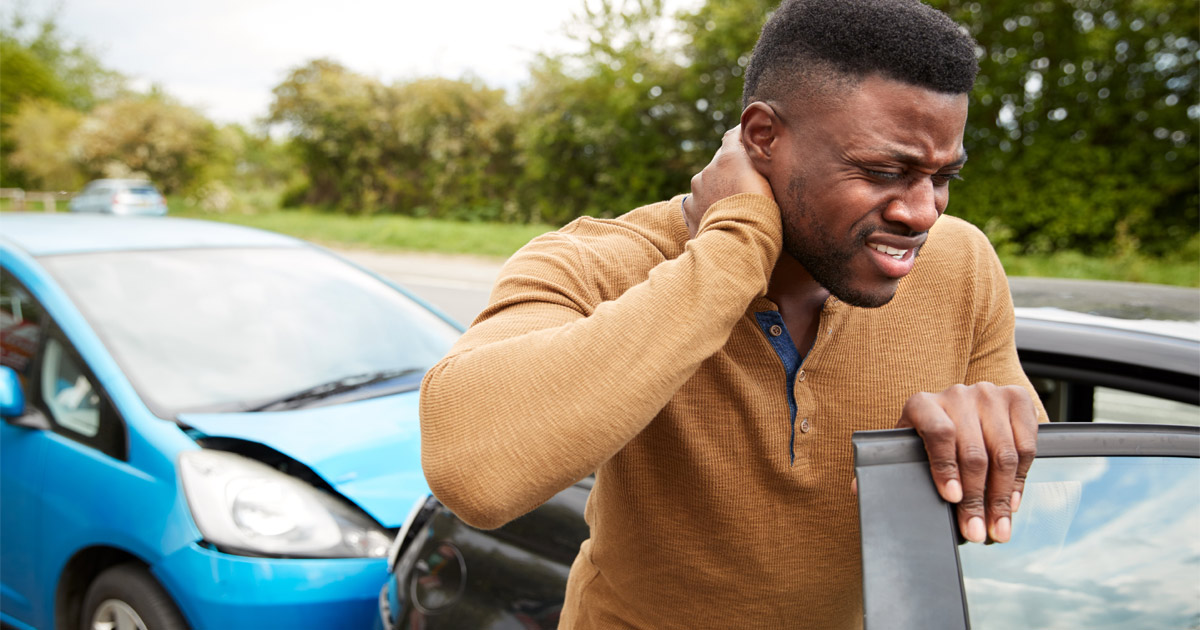Car accidents are a leading cause of injury in the United States. Some of these injuries can result in long-term disabilities that affect multiple facets of a person’s life. One such injury that most people do not realize can happen from the result of a car accident is joint damage. These types of injuries may not appear immediately following a crash, but they can upend one’s life just the same.
Joint pain is typically part of post-traumatic arthritis, which occurs following a severe injury, such as one suffered in a car accident. Car accident injuries can cause abnormal stress on your body, causing sprains and strains to the tissues that support the joints. When ligaments in the body become torn or stretched, the joints can become inflamed, which is similar to that of arthritis. Although arthritis is an autoimmune disease, post-traumatic arthritis does not occur as the joint wears over time, instead, it happens when an injury has already damaged tissue or a joint.
If you are suffering joint pain after a car accident, you should contact your doctor immediately and get checked. Many injuries similar to joint paint and post-traumatic arthritis occur well after the initial injury, sometimes days or weeks after the fact. That is why it is always recommended to seek medical treatment immediately following a car accident, regardless of how you feel.
The trauma of a car accident can lead to delayed pain because the body tries to protect itself following trauma. There are some reasons why the body reacts to trauma like this:
- Shock: Shock is the body’s stress response to trauma. When you are in shock, your body protects itself by allowing blood to redirect to its most crucial organs. The psychological aspect of shock can sometimes feel like a mental detachment, and you will not feel the severity of the injury while you are in shock. The state of shock can last for about a few hours.
- Adrenaline: Adrenaline can also mask pain from an injury when the body goes into a protective state, and tissue repair is temporarily stopped while adrenaline is pumping. Adrenaline redirects blood to your muscles, which is likely why you feel stronger when adrenaline is pumping and you are not aware of being injured.
- Inflammation: After shock or adrenaline wear off, your body responds to trauma by inflammation or swelling where the injury occurred. Inflammation is increased blood flow to the injury, where it is meant to protect the area from further harm.
Medical attention is the only way to properly diagnose and treat delayed pain like joint pain and post-traumatic arthritis. Without it, your pain and injury will likely worsen, which could lead to disability and higher medical costs.
Furthermore, not seeking medical care within a reasonable time following a car accident will likely inhibit your ability to file a proper insurance claim or seek compensation for the injury. The longer you wait to receive treatment, the more likely the insurance company or the court will think your injuries are not serious.
How Are Joint Injuries Diagnosed?
Your health care provider will listen to you and perform a physical exam, leading to a diagnosis. The physical exam will involve moving your injured joint and detailing your symptoms, as well as determining your range of motion. Your provider may also use imaging tests to confirm their diagnosis:
- X-ray: An x-ray would be used to confirm the damage done to the bones in your joint.
- MRI: An MRI is used to obtain a complete picture of your injury and the surrounding areas, revealing damage to the bones and tissues.
- CT scan: A CT scan is a more detailed picture of the injured joint, the bones, and the surrounding tissue, more so than an X-ray.
How Are Joint Injuries Treated?
Joint pain and post-traumatic arthritis rarely need surgery but could take months to heal properly. The most severe cases, however, may require surgery. Other ways to treat joint injuries include:
- Weight loss: Too much weight on the body can put extra stress on your joints.
- Exercise: Low-impact exercise like swimming or biking can put the joint in motion, which can help reduce pain and swelling while not straining the injury.
- Physical therapy: A physical therapist will create a workout plan that focuses on strengthening your injured joint while increasing flexibility.
- Brace: Your provider may recommend placing a brace around the joint to reduce tension and hold the joint in place.
- Medication: Your provider will recommend medications you can take to help reduce the pain. Be careful, however, as over-the-counter drugs like aspirin or ibuprofen can cause bleeding and other negative side effects.
Ohio Car Accident Laws
If you are suffering a joint injury following a car accident, you may be able to receive compensation, especially if the accident was caused by someone’s negligence. However, there are a few laws in Ohio that you should be aware of, as they may affect your case:
- Statute of limitations: The statute of limitations is essentially a time limit for when a person can file a lawsuit. The statute of limitations for personal injury lawsuits in Ohio is two years from the date of the accident.
- Comparative negligence: Comparative negligence is a legal principle. This means that each party will share a percentage of fault for an accident. If the plaintiff is found to share some fault for the accident, then their compensation is reduced by their percentage of responsibility. For instance, if the plaintiff is found to be 25 percent at fault for the accident, then they would receive only 75 percent of the award. If the plaintiff is found to be more than 50 percent at fault for the accident, then they are not able to receive any award.
- Fault insurance: Ohio follows a fault insurance system. This means that if you are hurt in an accident, typically, the at-fault driver’s insurance will compensate you. However, if you get into an accident, you can get compensation for your losses through one of three ways: by filing a claim with your own insurance company, filing a third-party claim with the other driver’s insurance, or filing a personal injury lawsuit in certain circumstances.
Loveland Car Accident Lawyers at the Wolterman Law Office Help Accident Survivors Who Are Suffering From Joint Injuries
Injuries from a car accident are common, especially soft tissue injuries like joint damage. If you have been injured in an accident because of another driver’s negligence, contact one of our Loveland car accident lawyers at the Wolterman Law Office immediately. Call us at 513-488-1135 or fill out our online form for a free consultation. Located in Loveland, Ohio, we serve clients in Hamilton County, Fairfield, Norwood, and Forest Park.


